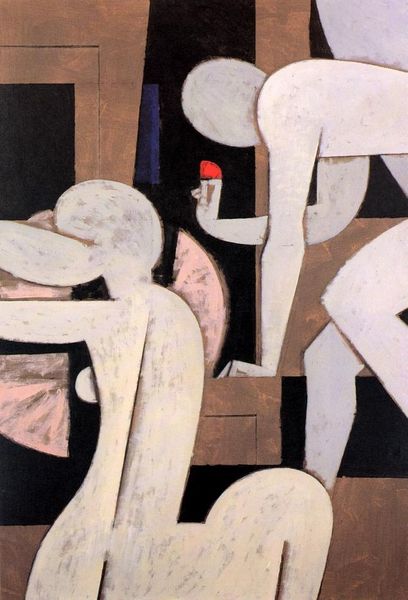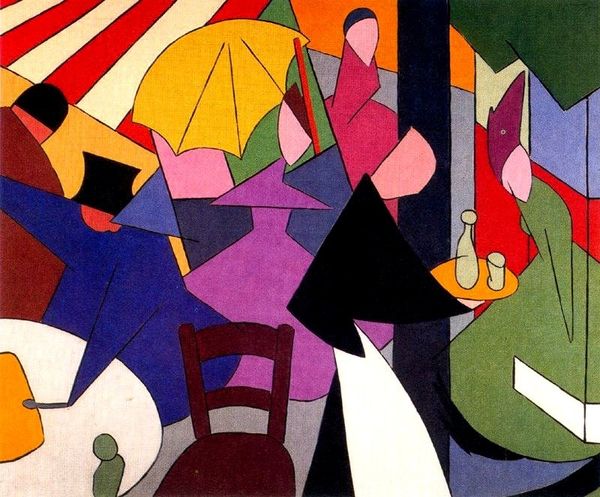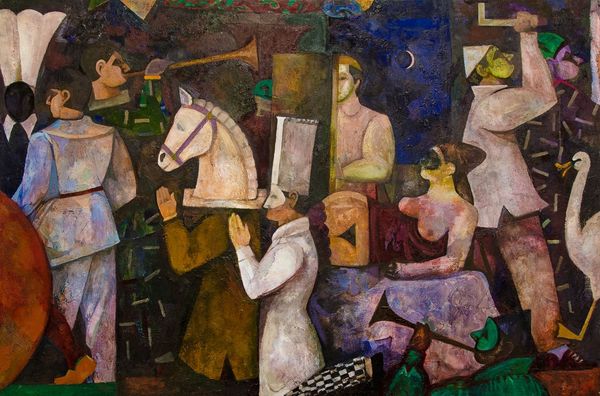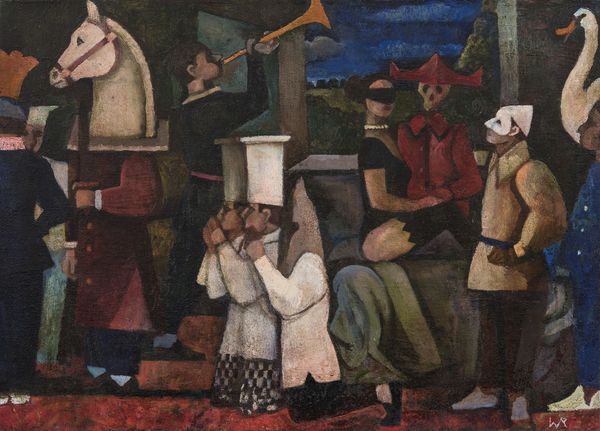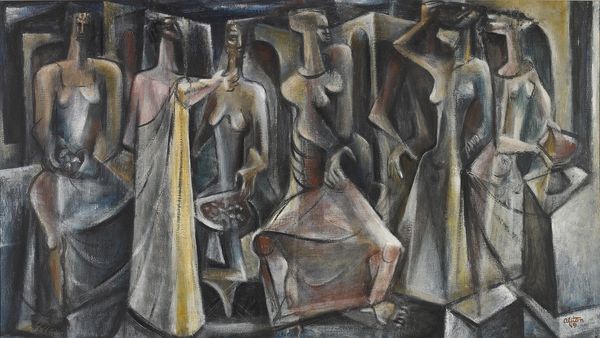
Copyright: Alexander Bogen,Fair Use
Curator: Alexander Bogen's 1970 mixed-media work, "The Holocaust," compels us to confront one of history's darkest chapters. Editor: My immediate response is to its somber, almost oppressive atmosphere. The muted colors, fragmented figures—they evoke a sense of profound unease and suffering. Curator: Absolutely. Bogen, a Holocaust survivor himself, wasn't interested in simple representation. His expressionistic style and the use of figuration serve to portray the psychological trauma and social devastation. Note how the narrative art operates— Editor: Excuse me, but I must observe that these stylized shapes are positioned rather like components of architecture—massive slabs that recall not figures but mausoleums. Semiotics would suggest they embody unspeakable loss. Curator: Yes, the shapes suggest enclosure, and indeed Bogen uses a palette reminiscent of shadows, of absence, to emphasize not only physical death, but the erasure of identities, cultures, and futures. It begs questions: who are these people? How were they forced to face displacement and marginalization? Editor: True, although what speaks to me most profoundly is Bogen's handling of scale. Observe how he positions objects so that we grapple with the emotional weight embedded within their forms. Those pale individuals, each with uniquely grief-stricken gestures, serve almost as hieroglyphs expressing utter powerlessness. Curator: Right. Powerlessness born of institutional failure. Bogen implicates society—he confronts us with the structures and beliefs that allowed such atrocities to occur. Even his medium, that mixed concoction of pigment, allows a blending of horror, reflecting the blending and obliteration of personal histories that took place. The canvas, then, almost operates as both memorial and warning. Editor: Ultimately, Bogen seems less concerned with historical accuracy than with communicating visceral feelings using compositional cues: asymmetry; abrupt shifts of plane and color, with a deliberate distortion of form to intensify our empathic engagement. Curator: A painful but vital act of memorialization, and indictment. Editor: And, in its unique style, a chilling testament to the potency of formal pictorial construction.
Comments
No comments
Be the first to comment and join the conversation on the ultimate creative platform.
